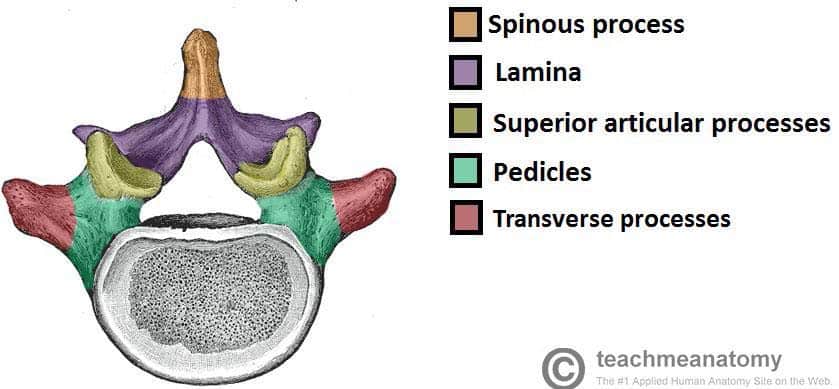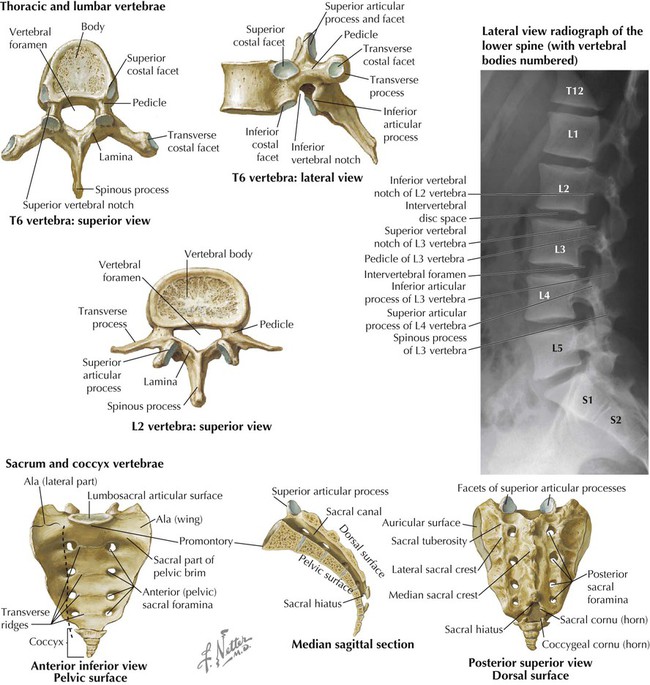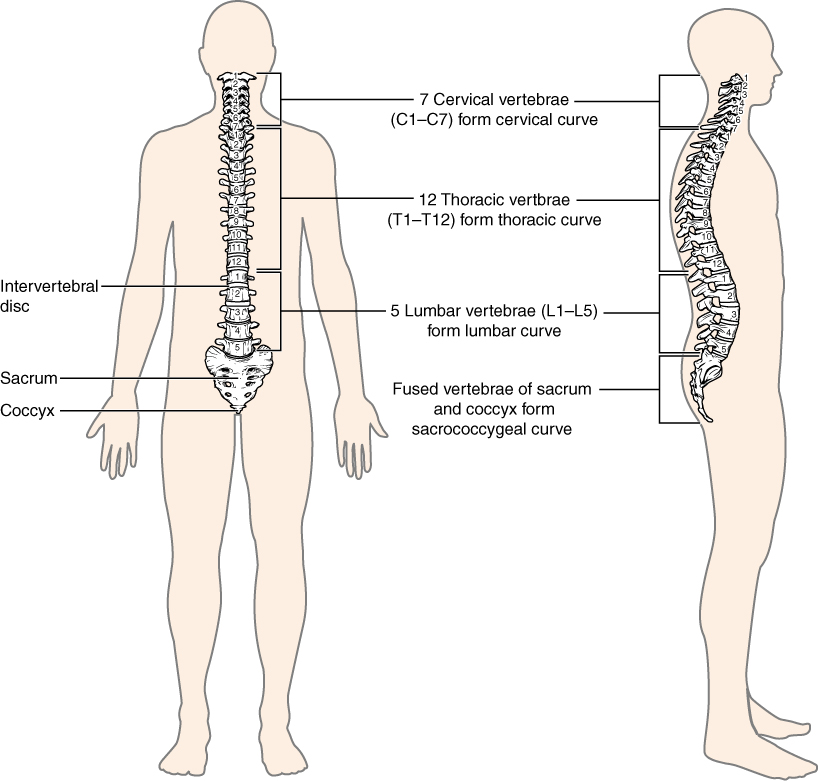Which of the Following Compose the Vertebral Arch
Enclosure formed by body and vertebral arch coming together-Vertebral canal. Pedicle of vertebral arch On the pedicles of the following structures that may be identified.

The Vertebral Column Joints Vertebrae Vertebral Structure
All of the following are characteristics of the maxillae except.

. Which of the following compose the vertebral arch. Short thick processes that project posteriorly on each side of a vertebral body are called the. Does the hyoid bone have any solid bony attachments.
The superior vertebral notch smaller and the inferior vertebral notch deeper which form the in-tervertebral foramen made up of the inferior vertebral notch from vertebra above and the superior vertebral notch from the vertebra below when the vertebrae are articulated. Each lamina forms part of the posterior roof of the vertebral arch. Chapter 8 Problem 14PL2 is solved.
Serioes of vertebral foramina-Intervertebral foramina. See additional information. Transverse process and foramen x.
The primary function of the vertebrae is to protect the spinal cord. Developmentally the dens arise from the atlas. The dens or odontoid process is a region of constriction at which the body part of the vertebra joins.
Compose the upper jaw. The spine has several major roles in the body that include. Fused flattened plates from posterior arch-Vertebral foramen.
As you look at the different vertebrae compare and contrast vertebrae from different regions in the body. Superior articular process and facet vii. Greaterlesser horn comua cornua body.
It consists of four parts the right and left pedicles and the right and left laminae. Vertebral Arch characteristics Formed by two pedicles and two laminae that support four articular processes two transverse processes and one spinous process. Each pedicle forms one of the lateral sides of the vertebral arch.
The main part body of a rib b. Inferior articular process B. A vertebral arch is composed of a floor at the back of the vertebra walls the pedicles and a roof where two laminae join.
The dens act as a pivot that allows rotation of atlas and skull. A typical vertebra is composed of which main parts. What Structures Make Up The Vertebral ArchThe vertebral arch is formed by pedicles and laminae.
Inferior articular process and facet Lamina Vertebral arch Superior articular process and facet Vertebral foramen Bifid spinous process Body Pedicle Transverse foramen Transverse process a. The pedicles are anchored to the posterior side of the vertebral body. They are classified in groups based on their location.
Vertebral arch the dorsal bony arch of a vertebra composed of the laminae and pedicles of a vertebra. Step 1 of 3. Is the angle of the rib on the anterior or posterior side of the body.
Body vertebral arch. Vertebrae along with intervertebral discs compose the vertebral column or spine. It extends from the skull to the coccyx and includes the cervical thoracic lumbar and sacral regions.
Check all that apply A. A ruptureportrusion of the nucleus pulposus into the vertebral canal also known as a slipped disk The vertebral arch is composed of what two things two pedicles and two laminae. It consists of a pair of pedicles and a pair of laminae and supports seven processes.
Short pillars from sides of arch Two laminae. Zygomatic arch the arch formed by the temporal process of the zygomatic bone and the zygomatic process of the temporal bone. Beside above what are the 3 main parts of a vertebra.
The vertebral arch forms the posterior portion of each vertebra. Inferior articular process and facet viii. Bifid spinous process ix.
Vertebral Column Spine The vertebral column consists of 24 vertebrae of different sizes and shapes. B articulate with all other facial bones The only unpaired bones of the face are the A inferior nasal concha and maxilla B lacrimal bone and nasal bone. A narrow region where the head meets the tubercle d.
The vertebral arch or neural arch is the posterior part of a vertebra. Two pedicles extend from the sides of the vertebral body to join the body to the arch. A depression containing the intercostal artery vein nerve c.
Body vertebral arch. Lateral openings between vertebrae for passage of spinal nerves. Identify the atlas C1 and axis C2 as well as the following bone markings of the cervical vertebrae.
The dens is a projection of the axis one of the vertebra. A circle of bone around the canal through which the spinal cord passes. The cervical the thoracic and the lumbar spine.
The pedicles are short thick processes that extend one from each side posteriorly from the junctions of the post. Which of the following vertebral areas have a kyphotic curve. -Vertebral arch composed of.
A projection between the shaft and neck a. The normal anatomy of the spine is usually described by dividing up the spine into three major sections. 10 Match the description listed in column A with the features of the typical rib listed in column B Column A Column B ___d___ 1.
A vertebral arch is composed of a floor at the back of the vertebra walls the pedicles and a roof where two laminae join. General Structure of Vertebrae. Body or centrum Anterior weight-bearing region Vertebral arch Composed of pedicles laminae that along with centrum enclose Vertebral foramen Vertebral foramen Vertebral canal for spinal cord Intervertebral foramina Lateral openings between adjacent vertebrae for spinal nerves.
Costal groove ___c___ 2. Name the major features of the hyoid bone. Take note of the bone markings that are found in.
A rib that attaches to the sternum by the cartilage of rib 7 has what name. In the posterior midline of the vertebral arch the _____ projects posteriorly from the right. Identify the atlas C1 and axis C2 as well as the following bone markings of the cervical vertebrae.



No comments for "Which of the Following Compose the Vertebral Arch"
Post a Comment